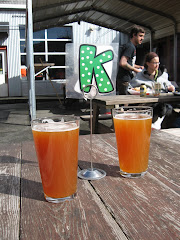
Columbia Springs, a local environmental education non-profit, offers on a bunch of classes for educators. These classes are often all day workshops whose appeal is twofold first the topics are usually interesting, covering the environmental/nature themed gamut from owls, to geology, to salmon, to bats. The other great thing is that the full day classes often offer substitute reimbursement, which means the cost of the substitute in not taken out of my paycheck and I miss the entire workday for “professional development”.
I have taken no fewer than ten of these classes. One of the best that Amy (the organizer/teacher) has put on actually took place at Lewisville Park. I think the title had something to do with forestry and the speakers were a career national parks service forester, a woman doing her PhD on mosses and lichens and a professor from Lewis and Clark University. I wish I remembered his name but I was most impressed by this part of the day. He armed us with plant identification guides and we set out on a quick moving hour-long hike in which he had us watching for specific plants and stopping to identify unknowns. He would also stop us and play a sort of “What do you think happened here?” problem solving and group think sort of game. Like any good teacher, he never identified our ideas as right or wrong, but encouraged his class of 20 educators to keep discussing the answer. Yay! Best Practice!
It was in this class that I was first introduced to the plant guide I referenced a few days ago. And, in this same spirit that I include this photo. After looking through the book I find that this what is called a manroot or bigroot. According to the book, “the large size of the root s the source of both common names.” The book also informs me that this is a common member of the “other families” section of the plant identification book. I wonder what the criteria are to make it into the “other families” section as opposed to (and yes this is a real category) the “oddballs.”
Really, I want to make bawdy jokes at the name and spiny gourd shape, or “football-shaped bladders.” But, I feel to do so would simply be overkill. The spikey hanging ball is its own joke. Anything else would be redundant.

No comments:
Post a Comment